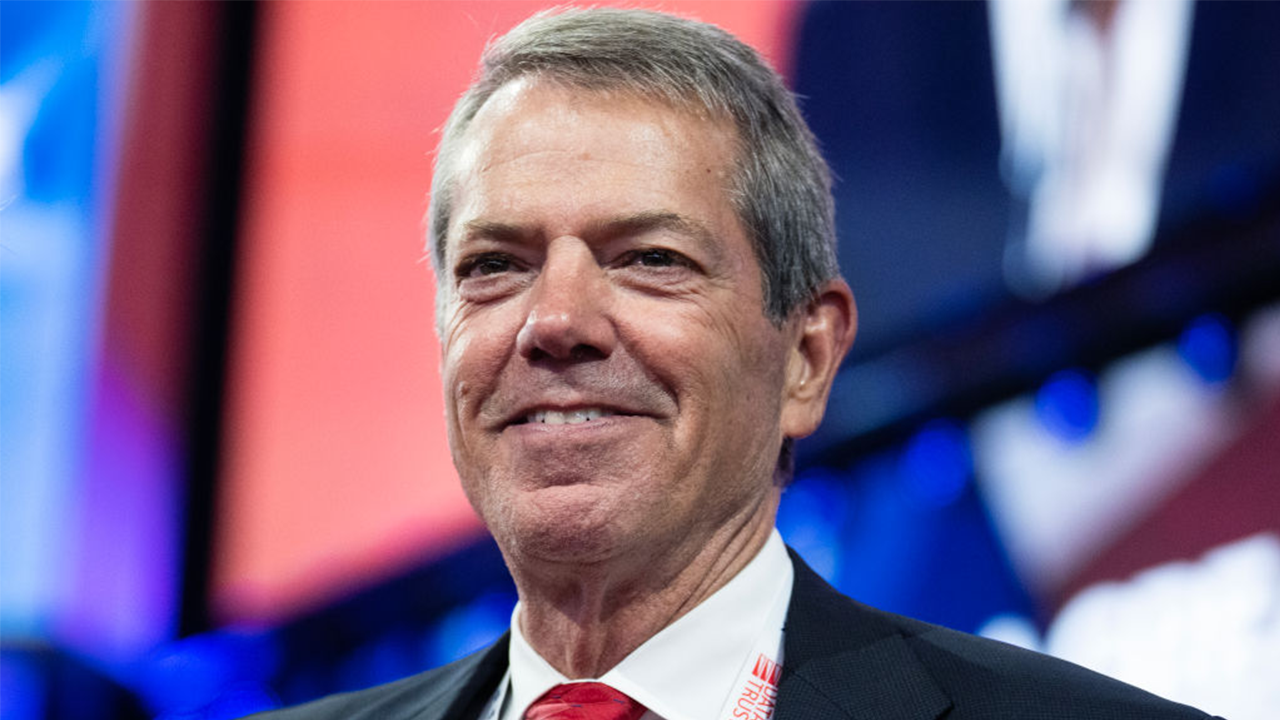Alaska
Ted Stevens Anchorage International Airport unveils master plan for future airport development
/cloudfront-us-east-1.images.arcpublishing.com/gray/INEBP2R7RNHT3GFAEWAESLLGYQ.jpg)
ANCHORAGE, Alaska (KTUU) – The Ted Stevens Anchorage International Airport hosted a master plan update public open house on Wednesday evening at the Lakefront Hotel. The open house served as one of the airport’s public participation events that will be used to inform and gather feedback on the update.
According to the Federal Aviation Administration, an airport master plan is a comprehensive study of an airport that considers the short, medium, and long-term needs for the airport’s infrastructure. They are typically done every five to seven years, but Anchorage’s airport says it’s been 10 years since the last master plan was adopted. Now, it is eyeing a new, updated plan to guide future development of the airport which is expected to be finalized at the end of next year.
“As the master plan team looks at the alternatives for development in the future, it’s an engagement with the community,” said Craig Campbell, the manager of the Ted Stevens Anchorage International Airport.
Project manager Evan Pfahler, who also worked on the last master plan in 2013, said they look at the big-picture when coming up with an update.
“To take a look into the future, understand the needs of the national air transportation system, how that might affect this particular airport and set in motion a vision for the future development of the airport in a responsible and conscious way,” Pfahler said.
The plan will establish a strategy for Airport Management and the Alaska Department of Transportation and Public Facilities, which say they are aiming to continue safe and efficient operations at the airport.
“With about a decade of change, it’s a really good time, we’re coming out of COVID so there’s a lot of growth and activity at the airport,” Pfahler said. “The way that people travel and the way that cargo has been growing in Anchorage, this is a great time to update the master plan and ensure that the facilities at the airport — the terminal, the cargo facilities — will work well for the next five, 10, and 20 years.”
The airport is now the third busiest cargo hub in the world and has seen significant tourism growth.
“Find ways to best accommodate growth as well as changes in the way that airplanes and the traveling public fly and operate,” Pfahler said. “So, we want to make sure that the infrastructure at the airport serves demand efficiently, safely, and does so in a responsible way.”
The airport wants engagement with the community; this is just the first of three public meetings.
“Please continue to participate in this public process, help us make the best possible airport for the state of Alaska,” Campbell said.
These meetings will give people an opportunity to meet the project team and learn more about the planning process for future projects at ANC.
Copyright 2023 KTUU. All rights reserved.

Alaska
Ted Stevens Anchorage International Airport busy with holiday travelers

ANCHORAGE, Alaska (KTUU) -Many of the people arriving to and departing from Ted Stevens Anchorage International Airport Sunday agreed that Anchorage’s main airport isn’t as tough to navigate as most right now.
On Dec. 22, three days out from both Hanukkah and Christmas, travelers at the airport were lined up, checking in, waiting for baggage, or going through security; all of those, demanding a wait. However, several travelers told Alaska’s News Source about their experiences and what they were expecting during their flights.
Matt Howard departed from Raleigh-Durham International Airport in North Carolina around 5 a.m. “It was the busiest I’ve ever seen it,” Howard said. He estimated he touched down in Anchorage around 6 p.m., adding Ted Stevens was much “less frantic” than the other airports he was at, but thought the evening time frame might have been a contributing factor.
Flying in from Hartsfield-Jackson International Airport in Atlanta, Georgia, Kimberly Lamar said she visits her mother in Alaska at least once a year.
“It was pretty overwhelming, trying to get through from Atlanta,” she said. “Then I got to Seattle; it was hard to get through to the gates of Seattle. And finally, this is the easiest airport I’ve actually been in all day.”
Born and raised in Alaska, Gideon Mahoney was traveling to Colorado where he recently relocated. “I’m actually really surprised, right now it’s easy and we were a little late, so…” Mahoney said, glancing at the line for security.
Growing up in Alaska, Mahoney said flying into Denver International Airport can be overwhelming at times.
“We’re working on figuring out how to deal with that,” he said. “We’re getting it.”
As for travelers who haven’t left just yet, Lamar’s advice was aligned with a prepared statement from Alaska Airlines: both said arriving early is the key for holiday travels.
“If you’re flying, make sure you leave early because those lines are crucial,” Lamar said.
See a spelling or grammar error? Report it to web@ktuu.com
Copyright 2024 KTUU. All rights reserved.
Alaska
Hydroponics provide year-round growing for Alaska farmers

On a recent December afternoon, Soldotna farmer Taylor Lewis preps for a day of harvesting crops. She walks to a tray filled with ripe lettuce and snips a head of it by the stem.
It’s just one of about 900 plants that Taylor and her mother-in-law Jayme Lewis will harvest and process this week – despite freezing temperatures and slushy snow outside. That’s because the duo works for Edgy Veggie, an indoor farm that grows produce year round.
“In the summer, a lot of our business drops off because folks are gardening at home. But in the winter, they’re not, because it costs money to heat your greenhouse,” Jayme said. “It costs a lot of money to heat your greenhouse.”
The company is a hydroponic farm, meaning they grow plants without soil. Hydroponic systems recycle and reuse nutrient-filled water, which minimizes waste. Specially made lighting and climate controlled conditions make it possible for Edgy Veggie to grow indoors during the winter months.
Around Thanksgiving, the company harvested 150 pounds of lettuce, enough to make about 800 salads. That took two days and was one of their biggest hauls of the year. Although not a typical harvest for the company, Jayme says she does see an uptick in business during the winter when Alaska’s produce is almost exclusively shipped up from the Lower 48.
“If you go to the grocery store and pick up a head of lettuce right now, by the time you get it home it will be wilted,” Jayme said. “That’s sad. Literally, that’s sad.”
Jayme says some local restaurants have sourced their vegetables from Edgy Veggie because they last longer and are fresher than grocery store produce.
Nestled between two train cars-turned-restaurants on the other side of town, Henry Krull walks inside his shipping container farm. He points to a wall that’s growing hundreds of bunches of butter lettuce.
Krull is the owner of fresh365, another Kenai Peninsula based hydroponic farm. Just like Edgy Veggie, the farm operates entirely indoors.
“The advantage of growing indoors, in a container like we have, is that we can control the environment,” Krull said. “We can grow no matter what’s going on outside. It can be 30 below outside, but it’s always 70 degrees or so inside.”
fresh365 also sees an uptick in direct-to-consumer sales in the winter. Otherwise, most of their sales go to other businesses, like local restaurants.

And while indoor farming means fresh, local produce year-round for Alaskans, it faces a number of challenges. Krull says growing in a hydroponic setting is much more expensive than traditional farming methods. So, to offset his farm’s energy costs, he installed solar panels, which were partially funded by the U.S. Department of Agriculture’s Rural Energy for America Program, or REAP.
But, Krull says the property doesn’t get much sunlight in the winter.
“The sun is a very valuable commodity, it’s valuable for not only producing electricity, but it helps to lower the energy costs,” he said. “And the energy costs of the farm containers we have is actually very, very high, because we can’t take advantage of the sun.”
Edgy Veggie, on the other hand, doesn’t even have solar panels. Jayme says their energy costs are high year round.
“Electricity, especially, is outrageous,” she said. “I wish that the state had some sort of option with the electric companies to help support farming. We’re providing a service to the community, honestly. We’re trying to, but it might run us out of business.”
Other challenges to hydroponics include faulty pumps and timers, ventilation issues and water leaks. Like traditional farming, hydroponic farmers say it’s backbreaking work.

But, for farmers like Taylor Lewis, offering fresh and local produce year round is a labor of love.
“Being able to supply our community with anything fresh is great,” Taylor said. “What we have as options in the grocery store – it’s not cutting it.”
“These belong in every community,” Krull said. “We’ve been able to prove that as a business model, it works. You can make a profit doing it, you can provide a good service to your community, and I think we can really do good for our community by providing something that is not readily available on a year-round basis.”
According to the U.S Department of Agriculture, only 5% of food Alaskans consume is grown locally. The state also has very short growing seasons.
Alaska
Nature: Northern Lights above Alaska

Watch CBS News
Be the first to know
Get browser notifications for breaking news, live events, and exclusive reporting.
-

 Politics1 week ago
Politics1 week agoCanadian premier threatens to cut off energy imports to US if Trump imposes tariff on country
-
/cdn.vox-cdn.com/uploads/chorus_asset/file/25789444/1258459915.jpg)
/cdn.vox-cdn.com/uploads/chorus_asset/file/25789444/1258459915.jpg) Technology1 week ago
Technology1 week agoOpenAI cofounder Ilya Sutskever says the way AI is built is about to change
-

 Politics1 week ago
Politics1 week agoU.S. Supreme Court will decide if oil industry may sue to block California's zero-emissions goal
-
/cdn.vox-cdn.com/uploads/chorus_asset/file/25546252/STK169_Mark_Zuckerburg_CVIRGINIA_D.jpg)
/cdn.vox-cdn.com/uploads/chorus_asset/file/25546252/STK169_Mark_Zuckerburg_CVIRGINIA_D.jpg) Technology1 week ago
Technology1 week agoMeta asks the US government to block OpenAI’s switch to a for-profit
-

 Business1 week ago
Business1 week agoFreddie Freeman's World Series walk-off grand slam baseball sells at auction for $1.56 million
-
/cdn.vox-cdn.com/uploads/chorus_asset/file/23951353/STK043_VRG_Illo_N_Barclay_3_Meta.jpg)
/cdn.vox-cdn.com/uploads/chorus_asset/file/23951353/STK043_VRG_Illo_N_Barclay_3_Meta.jpg) Technology1 week ago
Technology1 week agoMeta’s Instagram boss: who posted something matters more in the AI age
-
News1 week ago
East’s wintry mix could make travel dicey. And yes, that was a tornado in Calif.
-
/cdn.vox-cdn.com/uploads/chorus_asset/file/24924653/236780_Google_AntiTrust_Trial_Custom_Art_CVirginia__0003_1.png)
/cdn.vox-cdn.com/uploads/chorus_asset/file/24924653/236780_Google_AntiTrust_Trial_Custom_Art_CVirginia__0003_1.png) Technology2 days ago
Technology2 days agoGoogle’s counteroffer to the government trying to break it up is unbundling Android apps
/cloudfront-us-east-1.images.arcpublishing.com/gray/ROQJKN22CFDMVDNETRSZNC3BKQ.jpg)












